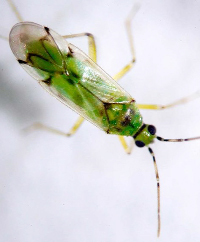
AP, Dalias :
“They work for me night and day,” smiles Antonio Zamora, standing in his greenhouse. His minuscule employees are bugs that feed on the parasites threatening his peppers.
Zamora, like most of his colleagues, no longer sprays his crops with pesticides, instead hanging small bags of mites on the plants, leaving them to attack parasites while sparing his produce.
He owns two hectares (five acres) in the so-called “Sea of Plastic”, some 30,000 hectares of greenhouses in southeastern Spain’s Almeria province, where much of Europe’s fruits and vegetables are grown.
The sparkling mosaic of white plastic bordering the Mediterranean – which is visible from space – produces tomatoes, cucumbers, courgettes, peppers and aubergines all year round to supply Europe’s supermarkets.
Last year 2.5 million tonnes of produce was exported from Almeria, half of Spain’s total vegetable exports.
Zamora, like most of his colleagues, no longer sprays his crops with pesticides, instead hanging small bags of mites on the plants, leaving them to attack parasites while sparing his produce.
He owns two hectares (five acres) in the so-called “Sea of Plastic”, some 30,000 hectares of greenhouses in southeastern Spain’s Almeria province, where much of Europe’s fruits and vegetables are grown.
“They work for me night and day,” smiles Antonio Zamora, standing in his greenhouse. His minuscule employees are bugs that feed on the parasites threatening his peppers.
Zamora, like most of his colleagues, no longer sprays his crops with pesticides, instead hanging small bags of mites on the plants, leaving them to attack parasites while sparing his produce.
He owns two hectares (five acres) in the so-called “Sea of Plastic”, some 30,000 hectares of greenhouses in southeastern Spain’s Almeria province, where much of Europe’s fruits and vegetables are grown.
The sparkling mosaic of white plastic bordering the Mediterranean – which is visible from space – produces tomatoes, cucumbers, courgettes, peppers and aubergines all year round to supply Europe’s supermarkets.
Last year 2.5 million tonnes of produce was exported from Almeria, half of Spain’s total vegetable exports.
Zamora, like most of his colleagues, no longer sprays his crops with pesticides, instead hanging small bags of mites on the plants, leaving them to attack parasites while sparing his produce.
He owns two hectares (five acres) in the so-called “Sea of Plastic”, some 30,000 hectares of greenhouses in southeastern Spain’s Almeria province, where much of Europe’s fruits and vegetables are grown.

